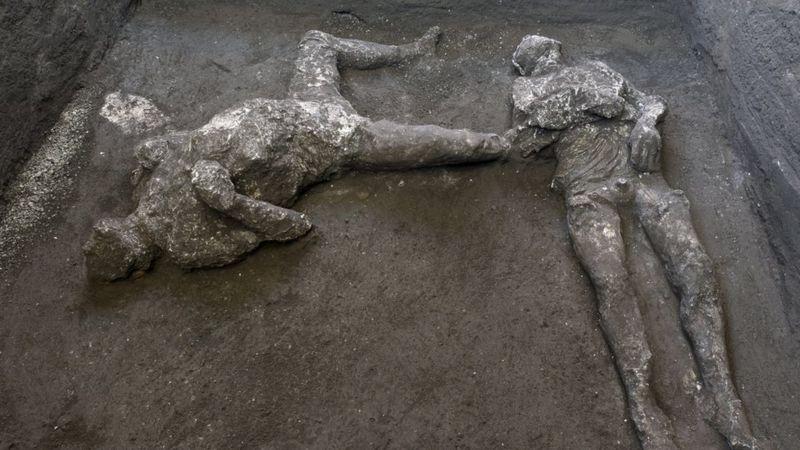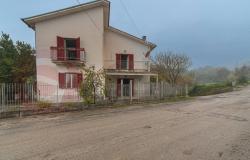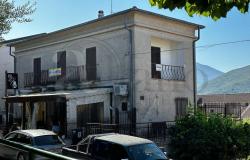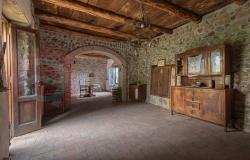Pompeii keeps surprising.
The well-preserved remains of two men, victims of Mount Vesuvius’ eruption in 79 AD, were discovered in the underground corridor of a ruined villa in the outskirts of the ancient Roman city destroyed by the volcano.
The victims are two men, one older, between 30 and 40 years old, and the other younger, between 18 and 25. The older man is thought to be wealthy, based on traces of his clothing, which include a warm wool cloak found beneath his neck; the younger man was probably his slave, as his compressed vertebrae suggest he was a manual laborer.
The two survived the immediate impact of the eruption, but died in a second volcanic blast the following day.
“It is a death by thermal shock, as also demonstrated by their clenched feet and hands,” Massimo Osanna, the director of the Archeological Park of Pompeii, said. “They were perhaps seeking refuge when they were swept away.”
To preserve the bodies, archaeologists used a technique that turned the remains into casts. As explained on the Smithsonian, it “involves pouring liquid chalk into cavities left by decomposing bodies; this plaster fills gaps in preserved bones and teeth, creating a cast of the bodies as they looked at the moment of death.”
The bodies come from the suburban villa of Civita Giuliana, a luxurious estate with terraces overlooking the sea, located outside Pompeii’s walls. In the stables of the villa, three years ago archaeologists found the remains of three thoroughbred horses, one harnessed with a decorated saddle, as if it had been prepared for its owner to go out.
The first excavations of the area date back to the early 20th century.
The presence of a wool cloak supports the recently emerged theory that says the eruption took place on October 24, not on August 24 as traditionally thought.













